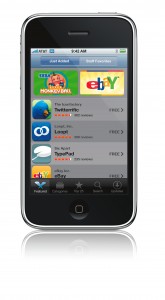 The greatest challenge faced by mobile operators is the way in which they will integrate prepaid customers who do not use banking services into their mobile transaction user base. Obstacles to be overcome include the role of the mobile terminal, the establishing of alliances between telecoms players and banks, regulatory aspects and the potential for fraud.
The greatest challenge faced by mobile operators is the way in which they will integrate prepaid customers who do not use banking services into their mobile transaction user base. Obstacles to be overcome include the role of the mobile terminal, the establishing of alliances between telecoms players and banks, regulatory aspects and the potential for fraud.
Signals Telecom Consulting, the leading telecommunications research and consulting firm for markets in Latin America and the Caribbean, announces the availability of its report entitled “Mobile Transaction Market: Banking, Payments and Money Transfers.” In this study, Signals examines various mobile banking alternatives and the use of cell-phones to make payments.
The report highlights the fact that any increase in the use of banking services will arise from a stable institutional and financial environment that will facilitate the design of products specifically intended to include sectors that had been excluded from the banking and financial sectors. In this context, mobile represent an alternative channel that can help to provide support to such new services for excluded sectors or to secure the loyalty of the existing customer base. “It should be mentioned that in most of the countries in the region there is either no register containing details of the identity and personal information of such customers, or such details are incomplete and easily falsified.
This weakness is exploited by criminal activities such as the theft of handsets and telephone extortion, among others. In other words, once again, any development of mobile banking must be based on duly registered postpaid and prepaid customers. At present, the potential for banking penetration into the mobile telephony area is only partial, which does not mean that it does not exist, pointed out Carlos Blanco, Market Research Director for Signals Telecom Consulting.
Advanced mobile banking options require the use of an electronic wallet associated with the mobile handset by means of which payments can be made. There are at present at least four main mobile banking service categories: remote payments, payments in person, authentication and initiation of banking mandate processes, and bank account administration. Many of them are already present in several countries in the region with varying degrees of complexity, driven by various agents along the value chain.
The report stresses that the migration of customers who top up their balances using existing options to handset-based alternatives should improve performance metrics in the prepayment business segment. This will be because of lower costs, increased revenue and the potential for personalization linked to Customer Relationship Management (CRM). “The putting together of a positive experience for virtual top-up users via their handset will be crucial, although such experience will need to be balanced by controls to prevent fraud,” Blanco added.
The “Mobile Transaction Market: Banking, Payments and Money Transfers” report provides forecasts to 2014 for eight markets in Latin America and the analysis of five mobile transaction models in the region.
If you liked this post, why not Subscribe and get Silicon Caribe Today by Email

 eCommerce1 year ago
eCommerce1 year ago